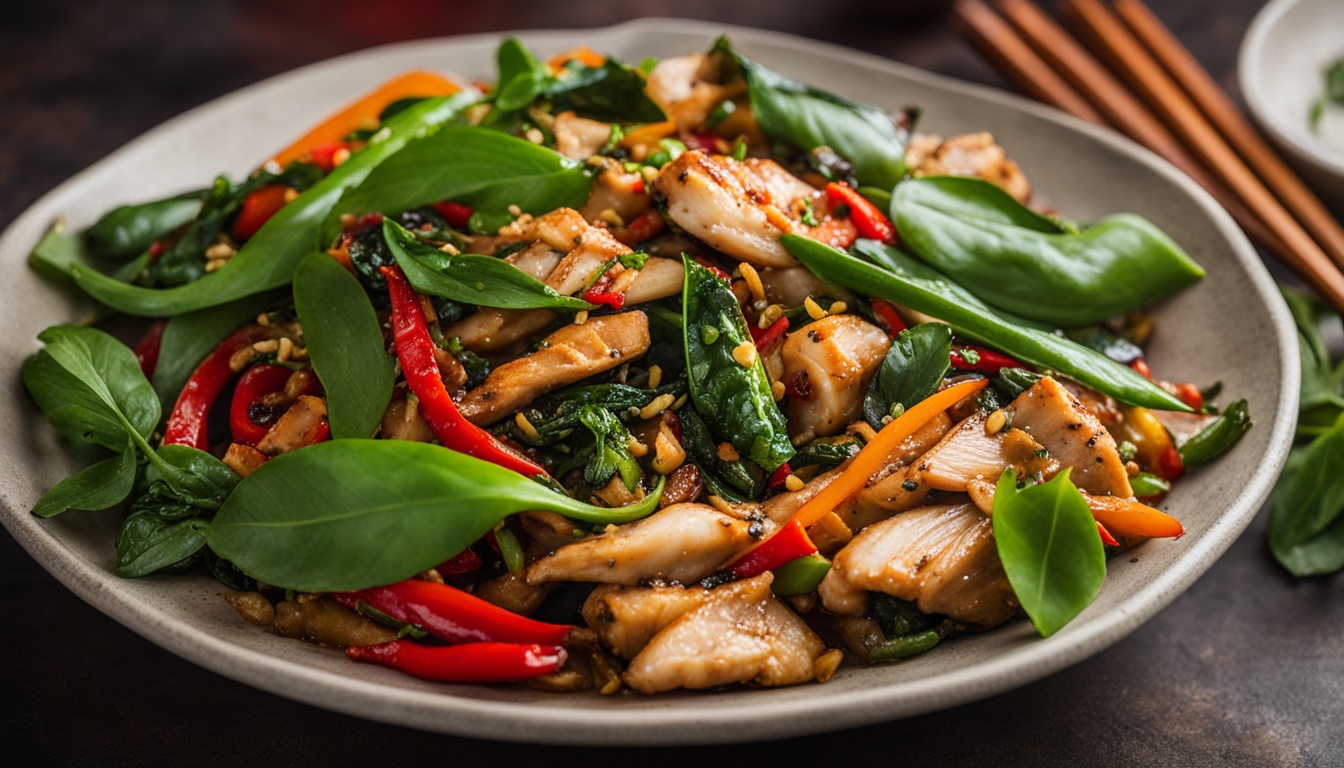When it comes to Southeast Asian cuisine, you’re probably familiar with staple ingredients like soy sauce, shrimp paste, and chili peppers. But have you ever considered adding Thai basil to your dishes? This vibrant herb is a game-changer when it comes to elevating the flavors of your Southeast Asian recipes.
Now, you might be wondering, “Why should I use Thai basil? Isn’t regular sweet basil enough?” Well, prepare to have your taste buds surprised. Thai basil brings a crisp pungency and a fresh, herbal-licorice flavor that sets it apart from its sweet counterpart.
So, in the realm of Southeast Asian herbs, why should Thai basil hold a special place in your kitchen? What unique uses does it have? And where can you find it?
Join us as we uncover the many benefits and culinary applications of Thai basil. Learn why this herb is a must-have in your Southeast Asian recipes and how to grow or find it for your next culinary adventure. Get ready to take your dishes to a whole new level with the aromatic and flavorful Thai basil.
Health Benefits and Culinary Uses of Thai Basil
In addition to its unique taste, Thai basil offers a range of health benefits that make it a valuable addition to any kitchen. This versatile herb contains essential oils, vitamins, and minerals that can promote digestion, reduce inflammation, and provide antioxidant effects. Including Thai basil in your cooking not only enhances the flavors of your dishes but also contributes to your overall well-being.
When it comes to culinary uses, Thai basil can be enjoyed both raw and cooked. Its distinct flavor infuses readily into dishes, making it a popular ingredient in Southeast Asian cuisine. Consider using Thai basil in salads for a refreshing twist or slivering it as a garnish to add a burst of flavor to your favorite recipes. Its vibrant leaves pair well with a variety of ingredients, from meats and vegetables to noodles and rice.
To get you started, here are a few delicious Thai basil recipes to try:
- Thai Basil Chicken: A classic stir-fry dish that combines tender chicken, colorful vegetables, and aromatic Thai basil. Serve it over steamed rice for a satisfying meal.
- Basil Fried Rice: This flavorful rice dish is made with fragrant jasmine rice, eggs, vegetables, and Thai basil. It’s quick, easy to make, and perfect for a weeknight dinner.
- Eggplant Curry: Roasted eggplant simmered in a rich and creamy curry sauce, infused with the aromatic flavors of Thai basil. Serve it with steamed jasmine rice for a comforting and flavorful meal.
Whether you’re a seasoned chef or a home cook looking to explore the world of Southeast Asian flavors, cooking with Thai basil opens up a world of possibilities. Its versatility, health benefits, and unique taste make it a must-have herb in your culinary repertoire.
Growing and Finding Thai Basil
If you want to have a fresh supply of Thai basil on hand, you can easily grow it in your garden. Thai basil is easy to grow and thrives in warm, humid conditions. It can be grown from seeds indoors and then transplanted outdoors when the temperatures are consistently above 50 degrees Fahrenheit.
Thai basil can also be grown in containers indoors if you have limited space. If growing is not an option, Thai basil can be purchased at well-stocked supermarkets or specialty Asian markets. While sweet basil can be substituted for Thai basil in a pinch, it will not provide the same distinct flavor. Holy basil is another option, but it can be harder to find in the United States.
